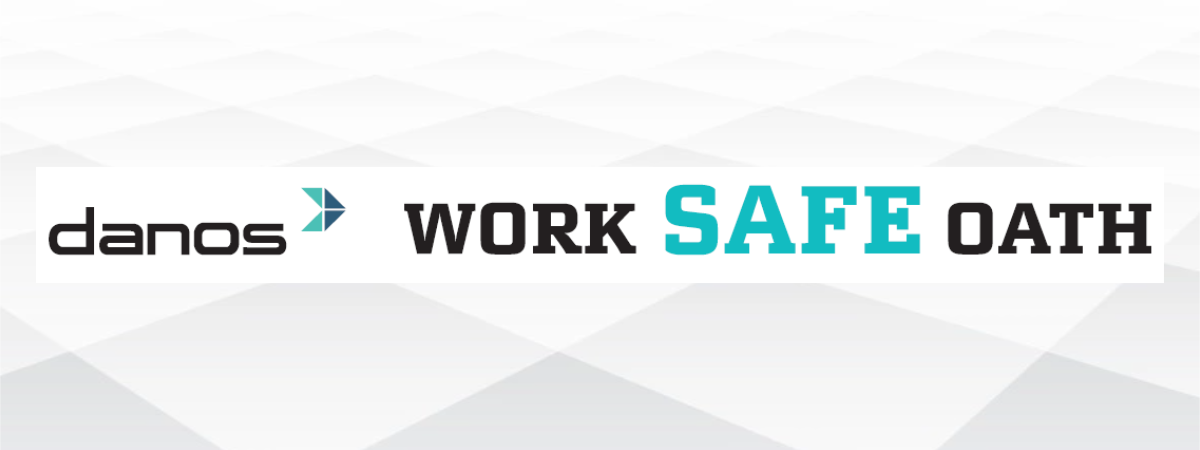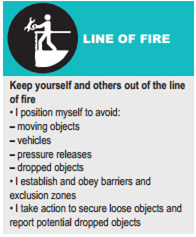Work Safe Oath: Line of Fire

 What is Line of Fire?
What is Line of Fire?
The term line of fire in safety is very common when talking about the hazards associated with the work we do. Depending on the task being performed, there could be many different lines of fire hazards present or possibly just a few. Simply put line of fire means being in harm’s way. Line of fire injuries occur when stored energy is unexpectedly released and contacts an individual.
Some common energy types in our work environment include:
Biological – Bacteria, animals, insects, bloodborne pathogens, and contaminated food or water.
Chemical – Vapors, toxic compounds, combustibles, and corrosives.
Electrical – Including transformers, lightning, wiring, batteries, static charges, and power cables.
Gravity – The force that enables objects and people to fall.
Mechanical – Rotating equipment, motors, or compressed springs.
Motion – The movement of objects including people.
Pressure – Process piping, compressed cylinders, tanks, hoses, pneumatic and hydraulic equipment.
Radiation – Including the sun, X-Rays, and welding arcs.
Sonic – Equipment noise, high pressure releases, abrasive blasting operations, and arc gouging.
Temperature – Hot or cold surfaces, steam, friction, and weather.
The best way to avoid line of fire injuries is to identify and eliminate the hazards whenever possible. When elimination is not possible, engineering controls are the next best thing. Examples of engineering controls include physical barriers, machine guards, and toe boards on elevated working surfaces.
It is important to decrease you chance of being injured by a line of fire hazard by not putting yourself in harm’s way in the first place. Ask yourself what is the worst thing that can happen or what will happen if a safeguard fails. Recognize the hazards of your work and act accordingly.
